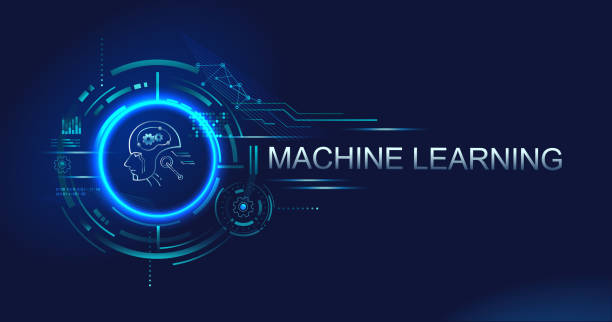
- March 25 2025
- SFI Solution Team
The Role of Machine Learning in Intelligent Data Mapping
In the current era characterized by data-centric approaches, organizations are persistently exploring methods to enhance operational efficiency, minimize expenses, and refine their decision-making processes. A key area where these objectives can be realized is through advanced data mapping. Advanced data mapping involves the systematic linking and integration of varied data from multiple sources, facilitating smooth analysis and informed decision-making.
Machine learning (ML), a significant branch of artificial intelligence, is instrumental in improving the efficiency of data mapping procedures. By utilizing advanced algorithms, machine learning enables organizations to automatically detect patterns, streamline data integration, and maintain data integrity. This blog delves into the transformative impact of machine learning on data mapping and underscores its importance for businesses aiming to leverage their data effectively.
Understanding Data Mapping
Before diving into the role of machine learning in intelligent data mapping, let’s define what data mapping is. At its core, data mapping is the process of matching fields from one data set to corresponding fields in another data set, typically during the integration or transformation of data. This could involve mapping fields in databases, spreadsheets, or other data repositories to enable easier comparison, reporting, and analysis.
However, as the volume of data grows and the diversity of data sources expands, manual data mapping becomes increasingly complex and error-prone. This is where machine learning steps in to automate and optimize the process.
How Machine Learning Improves Intelligent Data Mapping
-
Automating Data Integration
One of the most time-consuming tasks in data mapping is integrating data from different systems and formats. Traditionally, data integration required manual intervention to identify correspondences between fields across data sources. With machine learning, algorithms can automatically detect patterns in the data and create accurate mappings between fields, even when the structure or schema of the source data varies.
For instance, if you’re integrating data from an e-commerce platform and a customer relationship management (CRM) system, machine learning algorithms can identify fields such as “Customer ID,” “Product Name,” and “Purchase Date” across both systems and map them without human input. This drastically reduces the time required to complete data integration tasks.
-
Enhancing Data Quality and Consistency
One of the biggest challenges in data mapping is ensuring that the integrated data is of high quality and consistent across all sources. Data inconsistency, such as missing values, outliers, or conflicting data types, can hinder analysis and decision-making.
Machine learning can automatically detect and flag inconsistencies within the data, ensuring that only high-quality data is mapped and integrated. Algorithms can identify anomalies, missing values, or mismatches between data sets and either correct or alert users to potential issues. This results in more reliable and consistent data that can be trusted for analysis.
-
Learning from Historical Data
Machine learning models are able to continuously learn from historical data, which means they improve over time as they process more data. In the context of intelligent data mapping, ML models can adapt to new data sources, evolving data structures, and changing business requirements.
For example, a machine learning model that maps financial transactions might become more adept at identifying patterns in spending behavior over time, helping to create more accurate data relationships between different financial data sources. This continuous learning process enhances the accuracy and efficiency of data mapping, making it more effective as data environments grow and evolve.
-
Handling Unstructured Data
Many organizations deal with a significant amount of unstructured data, such as text, images, and videos. Mapping unstructured data to structured data sources can be extremely challenging, as the relationship between data points is not always obvious. Machine learning techniques like natural language processing (NLP) and computer vision can be used to analyze and map unstructured data to structured data formats.
For instance, machine learning can automatically extract relevant data from text documents, social media posts, or customer reviews, and map it to corresponding fields in a structured database, such as customer sentiment, purchase intent, or product features. This opens up new possibilities for businesses to integrate valuable insights from unstructured data sources.
-
Improving Data Security and Privacy
Data security and privacy are critical concerns when mapping and integrating data, especially with the rise of stringent data protection regulations such as GDPR and CCPA. Machine learning algorithms can play a key role in ensuring that sensitive data is mapped securely and that privacy guidelines are followed.
For example, ML models can automatically detect sensitive information, such as personally identifiable information (PII), and ensure that it is handled appropriately during the mapping process. They can also identify and flag any potential risks related to data breaches or non-compliance with privacy regulations, helping organizations mitigate risks before they become major issues.
The Future of Machine Learning in Intelligent Data Mapping
As organizations continue to collect vast amounts of data, the need for intelligent data mapping will only increase. Machine learning will become an even more integral part of data management processes, providing businesses with the ability to handle increasingly complex data environments.
In the future, we can expect to see further advancements in machine learning models that are capable of not only automating data mapping but also providing predictive insights into how different data sources interact. This will enable businesses to unlock new opportunities for growth, improve decision-making, and stay ahead of the competition.
Conclusion
Machine learning is revolutionizing the field of intelligent data mapping by automating processes, enhancing data quality, learning from historical data, handling unstructured data, and improving security and privacy. As data continues to grow in volume and complexity, businesses will need to leverage machine learning to keep their data mapping processes efficient, accurate, and scalable.
By incorporating machine learning into their data mapping strategies, organizations can ensure that their data is integrated seamlessly, providing them with the insights and intelligence necessary to make informed decisions and gain a competitive edge in today’s fast-paced business environment.
Previous Post